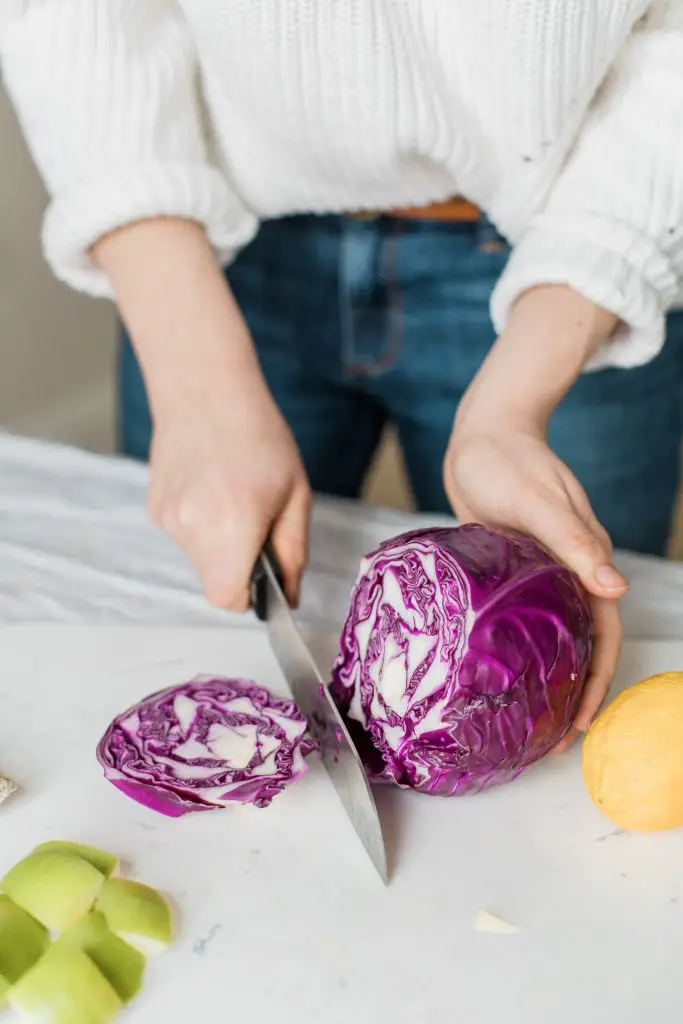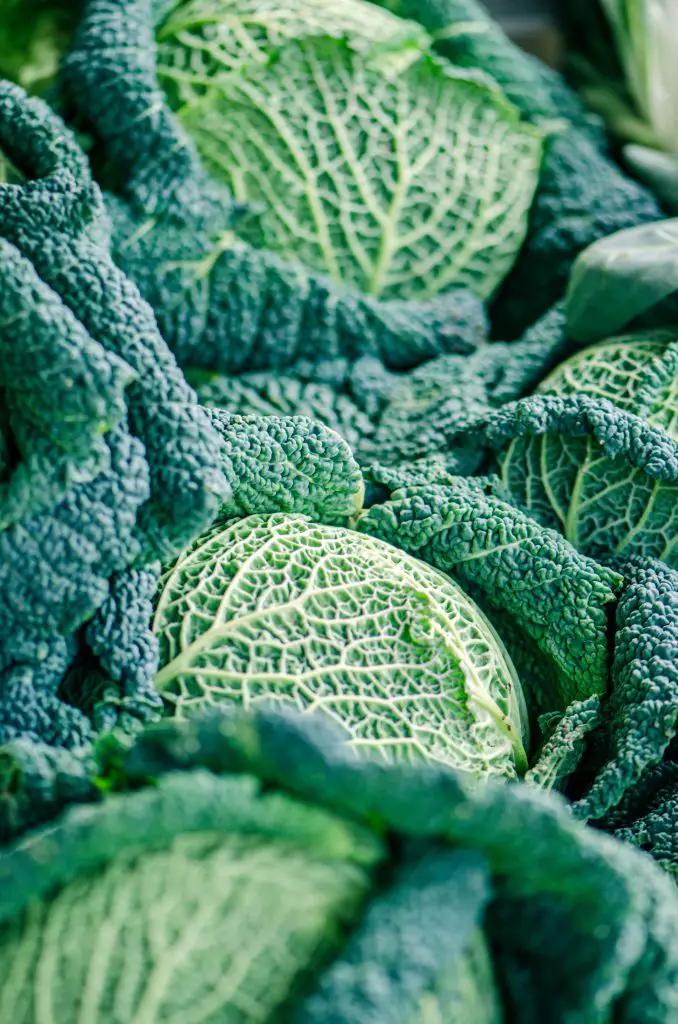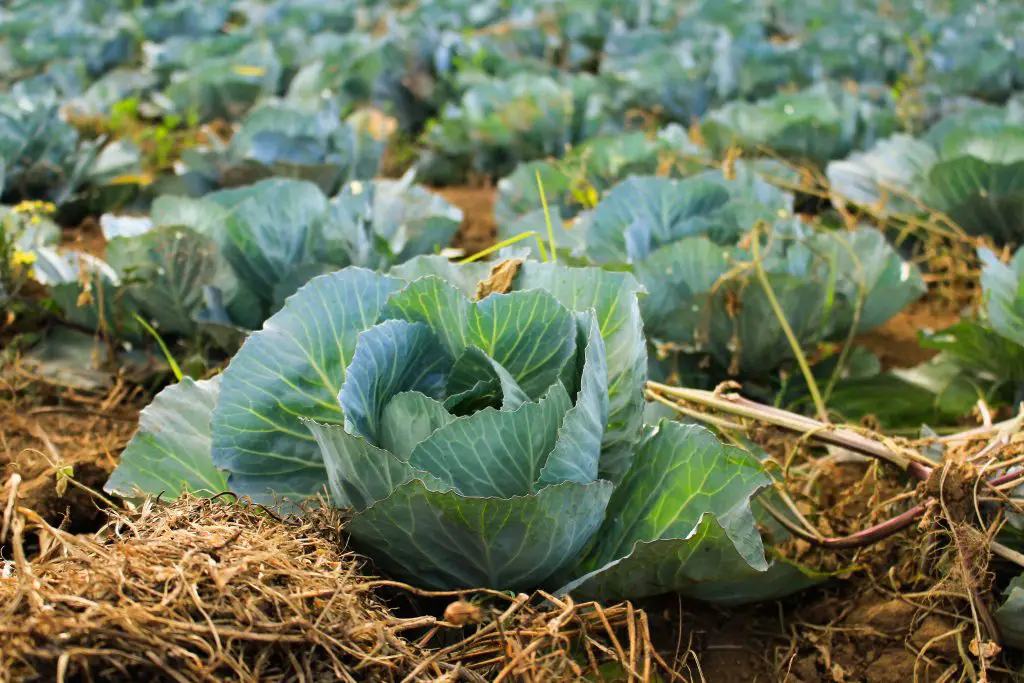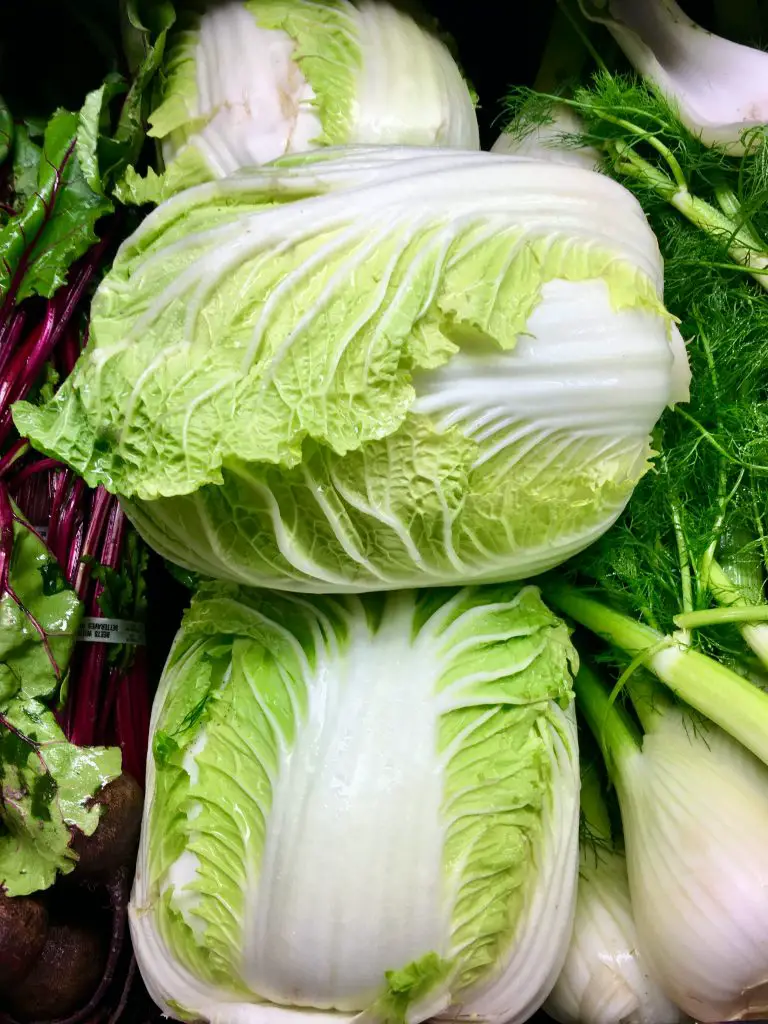Does Cabbage Grow Underground? Cabbage is a popular vegetable that has been grown all over the world for thousands of years. It forms a staple part of the diet in the cooler parts of Europe which rely upon its availability year-round. However, one of the common questions that is asked is does cabbage grow underground?
Cabbage does not grow underground. The section of the cabbage that we eat comes from the top of the plant and there is typically a small stalk around 2 to 4 inches tall that supports the cabbage head along with a relatively shallow root system. Cabbage is readily available fresh all year round in most climates due to the wide range of varieties that are available.
Cabbages can be classified in two main ways, based on when they are ready to harvest and also their appearance. In terms of when they are ready to harvest cabbages are classified as spring summer or winter cabbages.

Spring varieties as also sometimes referred to as late varieties because they take the longest to grow. They are generally sown in midsummer for a harvest the following winter. The winter varieties are considered mid-season varieties because they can be sown in spring for an autumn harvest which can be held over until winter if required.
The most rapid-growing cabbages are the summer varieties because they can be sown in early spring for a mid to late summer harvest and therefore are referred to as early varieties.
The second way to classify the cabbages is based upon their physical characteristics. The most common variety that is sold in western supermarkets is the green cabbage varieties which have an appearance similar to iceberg lettuce. The second variety is known as red cabbage and is quite similar in shape to the green cabbages except that it is red in color.
The third variety is savoy cabbage is which has undulating leaves that are similar in texture to tuscan kale and the final variety is napa cabbages which are sometimes referred to as Chinese cabbage. These varieties have an oblong shape rather than a round one like the other varieties. They also tend to be a relatively pale green compared to some of the other cabbage is that have been mentioned previously. To see a list of over 200 different varieties try visiting our vegetable database.

Is Cabbage Easy To Grow
Cabbage is generally quite easy to grow though it is known to have a few pest problems which can reduce the quality of the cabbage growing in your garden. However, these plants are generally quite forgiving in terms of when the seeds are sowed which means that as long as the temperatures are warm enough to germinate there isn’t a great deal of work that needs to be done.
How To Grow Cabbage
As mentioned above there is a range of times in which cabbages can be sown to stagger the harvest across the entire year. However, irrespective of when you sow seeds it is advisable to use a seed tray rather than sowing directly for a couple of specific reasons.
The first is that if you sow seeds in summer there is often very little space available in your garden due to the wide range of other crops that can be grown at that time of year. Therefore to minimize the amount of time that the cabbage spends in the ground it is advisable to start them off in a seed tray.
However, if you are planning to sow seeds in the cooler months of either winter or early spring it is generally a good idea to use a seed tray because it can be brought inside to increase the temperature which will accelerate the rate of germination and growth. While cabbage is highly resistant to cold weather it still requires a reasonable temperature in order to germinate and grow at a reasonable rate.
To start the seeds off fill the seed tray with a good quality seed raising mix and then ensure that you firm the soil down into the cells to form solid plugs. 2 to 3 seeds should be planted at a depth of a quarter of an inch in each cell to ensure that at least one plant comes up in each and every cell. If all the plants germinate thin out the weaker seedlings.

Once planted the savings will take around 7 to 14 days to germinate and will typically need to spend approximately 6 or even 8 weeks in the seed tray depending upon the temperature at which the seeds are being grown.
Planting Cabbages Out Into The Garden
Once seedlings have reached a reasonable size, typically around 3 to 4 inches tall, they can be planted out into the garden. Ideally, planting out should occur when the weather is beginning to warm up.
The cabbages should ideally be planted in a sunny location that gets at least 6 to 8 hours of sun per day. However, due to cabbages not needing to flower in order to produce the crop they can also be grown in shadier locations, however, the rate of growth may be slower.
When planting in the garden they should be spaced approximately 10 to 15 inches apart in rich moist and free-draining soil that contains plenty of nutrients. If you feel that the nutrients are lacking from the soil it is advisable to dig in a bag of compost before planting the seedlings.
Once the seedlings are in position a layer of mulch, approximately 2 to 4 inches thick should be applied to the soil before the plant is watered in well. The final step should be to apply snail pellets around the seedlings. This is extremely important because cabbage can be highly susceptible to attack from slugs and snails.

To reduce the chances of having problems the plants should be regularly inspected to ensure that snails and slugs are not living in between the leaves. This can be reduced by removing the lower leaves which often will yellow and deteriorate as the cabbage is continuing to grow. Additionally, it is important to maintain the health of the plant by ensuring that the plant is watered regularly.
Harvesting Cabbage
As the cabbage increases in size, the heart will begin to become increasingly dense. Once this occurs the cabbage is ready to harvest. To test when it is ready squeeze the head gently to gauge whether the head is solid. If there is very little give this is an indication that it is ready to be picked.
If you are growing cabbages throughout the winter those cabbages that are already readu can be left to stand in the garden for an extended period of time before being picked. Once picked the cabbages will still very well for several months if stored in a cool dark location.
I hope you found this article useful and have great success with your cabbages if you have any additional questions or comments please leave them in the section below.
Relevant Articles
What Types Of Cabbage Are There?
How Long Does It Take Cabbage To Grow? (A Complete Answer)
Is Radicchio A Lettuce Or Cabbage?
